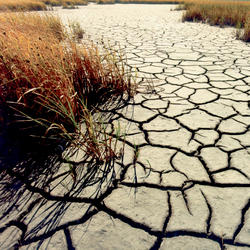FAQs
More Water Science Q&As
Didn't find an answer to your question? Look here for more water science questions and answers
So, you say the water from your faucet smells like rotten eggs? Maybe you wonder how water gets to your house way up on that hilltop or would like to know why your pond is full of slimy green algae. Hopefully, this FAQ's page can supply you with some answers.
Where can I find detailed sampling methods for surface water and groundwater?
The National Field Manual for the Collection of Water-Quality Data (National Field Manual) provides guidelines and standard procedures for USGS personnel who collect data used to assess the quality of the Nation’s surface water and groundwater resources. The manual is published as separate chapters. Learn more: Techniques of Water-Resources Investigations Reports
Where in the Nation are droughts or very low flows occurring now? How can I see these sites on a map and get to the data?
To view the USGS streamflow information on drought, see the drought map on our WaterWatch site, which shows below-normal, 7-day average streamflow compared to historical streamflow for the United States. Links to additional maps and drought data are listed on the USGS Drought website and the National Integrated Drought Information System (NIDIS) .
Where can I find flood maps?
FEMA is the official public source for flood maps for insurance purposes: FEMA’s Flood Map Service Center FEMA’s National Flood Hazard Layer NOAA is responsible for producing flood forecast maps that combine precipitation data with USGS streamflow data: National Weather Service - Advanced Hydrologic Prediction Service River Forecasts Long-Range River Flood Risk Coastal Inundation Dashboard : Real...
What is the Earth's "water cycle?"
The water cycle, also known as the hydrologic cycle, describes where water is stored on Earth and how it moves. Water is stored in the atmosphere, on the land surface, and below the ground. It can be a liquid, a solid, or a gas. Liquid water can be fresh or saline (salty). Water moves between the places it is stored. It moves at large scales (through watersheds, the atmosphere, and below the Earth...
How are floods predicted?
Flood predictions require several types of data: The amount of rainfall occurring on a real-time basis. The rate of change in river stage on a real-time basis, which can help indicate the severity and immediacy of the threat. Knowledge about the type of storm producing the moisture, such as duration, intensity and areal extent, which can be valuable for determining possible severity of the...
What is Devils Hole in Nevada?
Devils Hole is a tectonic cave developed in the discharge zone of a regional aquifer in south-central Nevada. The walls of this predominantly subaqueous (underwater) cavern are coated with dense vein calcite that precipitated from groundwater moving through the cavern. The stable isotopic content of the calcite provides a 500,000-year record of variations in temperature and other climate...
What is the difference between a confined and an unconfined (water table) aquifer?
A confined aquifer is an aquifer below the land surface that is saturated with water. Layers of impermeable material are both above and below the aquifer, causing it to be under pressure so that when the aquifer is penetrated by a well, the water will rise above the top of the aquifer. A water table--or unconfined--aquifer is an aquifer whose upper water surface (water table) is at atmospheric...
Why doesn't a drought end when it rains?
Rainfall in any form will provide some drought relief. A good analogy might be how medicine and illness relate to each other. A single dose of medicine can alleviate symptoms of illness, but it usually takes a sustained program of medication to cure an illness. Likewise, a single rainstorm will not break the drought, but it might provide temporary relief. A light to moderate shower will probably...
What is groundwater?
Groundwater is water that exists underground in saturated zones beneath the land surface. The upper surface of the saturated zone is called the water table. Contrary to popular belief, groundwater does not form underground rivers. It fills the pores and fractures in underground materials such as sand, gravel, and other rock, much the same way that water fills a sponge. If groundwater flows...
When does a drought begin and end?
The beginning of a drought is difficult to determine. Several weeks, months, or even years might pass before people know that a drought is occurring. The end of a drought can occur as gradually as it began. The first evidence of drought is usually seen in records of rainfall. Within a short period of time, the amount of moisture in soils can begin to decrease. The effects of a drought on flow in...
What causes drought?
A drought is a period of drier-than-normal conditions that results in water-related problems. The amount of precipitation at a particular location varies from year to year, but over a period of years the average amount is fairly constant. In the deserts of the Southwest, the average precipitation is less than 3 inches per year. In contrast, the average precipitation in the Northwest is more than...
What are the two types of floods?
There are two basic types of floods: flash floods and the more widespread river floods. Flash floods generally cause greater loss of life and river floods generally cause greater loss of property. A flash flood occurs when runoff from excessive rainfall causes a rapid rise in the water height (stage) of a stream or normally-dry channel. Flash floods are more common in areas with a dry climate and...













